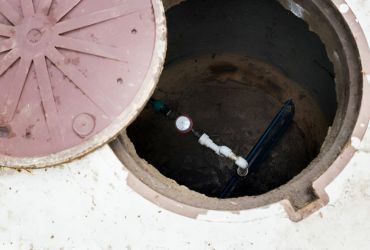Living in Virginia comes with the responsibility of maintaining safe drinking water, especially for homeowners relying on private wells. Well water testing in Virginia is not just a recommendation – it’s an essential practice that safeguards your family’s health. Unlike public water systems, private wells don’t have government-mandated testing requirements, making it crucial for homeowners to take proactive steps to ensure their water quality.
Understanding the Basics of Well Water Testing
When you turn on your tap, the water flowing through it tells only part of the story. Beneath the surface, various contaminants could be lurking, some completely invisible to the naked eye and tasteless to your tongue. That’s why regular testing is vital – it’s your window into what’s actually in your water.
Think of well water testing as a regular health check-up for your water supply. Just as you wouldn’t skip your annual physical, you shouldn’t overlook testing your well water. The frequency of testing depends on several factors, including your well’s age, location, and previous test results.
Recommended Testing Schedule for Virginia Residents
Annual Testing
At a minimum, Virginia homeowners should conduct basic well water tests annually. These tests typically check for:
- Total coliform bacteria
- E. coli
- Nitrates
- pH levels
- Total dissolved solids
- General water chemistry
Three-Year Comprehensive Testing
Every three years, consider a more thorough analysis that includes:
- Heavy metals (lead, copper, arsenic)
- Volatile organic compounds (VOCs)
- Radon
- Additional minerals and contaminants
Special Circumstances Requiring Additional Testing
Sometimes, you’ll need to test more frequently. Here’s when:
- After Heavy Rainfall or Flooding Virginia experiences significant rainfall events that can affect well water quality. Test your water if you notice changes in taste, odor, or color following heavy storms.
- Property Changes Construction, mining, or significant land use changes near your property may impact groundwater quality. When such activities occur, additional testing is wise.
- Well System Repairs Any maintenance or repairs to your well system should be followed by water testing to ensure everything is functioning properly.
- Pregnancy or New Family Members If someone in your household becomes pregnant or you have a new baby, more frequent testing is recommended as these groups are more vulnerable to water contaminants.
Understanding Test Results and Their Implications
Bacterial Contamination
Finding coliform bacteria in your water doesn’t necessarily mean you’ll get sick, but it indicates that disease-causing organisms could enter your water supply. If E. coli is present, stop drinking the water immediately and contact a water treatment professional.
Chemical Contaminants
Different chemical findings have varying implications:
- High Nitrates: Particularly dangerous for infants and pregnant women
- Elevated Lead Levels: Can cause developmental issues and other health problems
- Abnormal pH: May cause plumbing corrosion and affect water taste
Mineral Content
While minerals aren’t necessarily harmful, they can affect your water’s taste and your plumbing:
- High Iron: Causes staining and metallic taste
- Excessive Hardness: Creates scale buildup in pipes
- High Sulfur: Produces that distinctive “rotten egg” smell
Taking Action Based on Test Results
When Results Are Satisfactory
Even with good results, maintain your regular testing schedule. Keep records of all test results to track changes over time.
When Problems Are Found
- Understand the severity of the issue
- Consult with water quality experts
- Consider appropriate treatment options
- Schedule follow-up testing to ensure treatment effectiveness
Preventive Measures for Well Maintenance
While testing is crucial, prevention is equally important. Here are some steps to protect your well water quality:
Regular Maintenance
- Inspect your well cap annually
- Keep hazardous materials away from your well
- Maintain proper distance between your well and potential contamination sources
- Address any surface water pooling near your well
Record Keeping
Maintain detailed records of:
- Test results
- Well maintenance
- Repairs
- Changes in water quality or well performance
Understanding Your Well’s Location Context
Virginia’s diverse geology and land use patterns can affect well water quality differently across regions. Coastal areas may face different challenges than mountainous regions. Understanding your local context helps determine if you need more frequent testing for specific contaminants.
Environmental Factors Affecting Well Water Quality
Several environmental factors can impact your well water:
- Seasonal changes
- Drought conditions
- Agricultural activities
- Urban development
- Natural mineral deposits
Cost Considerations and Resources
While regular testing does involve costs, consider it an investment in your family’s health. Many Virginia counties offer basic water testing services at reasonable rates. Some health departments also provide testing assistance or recommendations for certified laboratories.
Conclusion
Regular well water testing in Virginia isn’t just about compliance – it’s about ensuring your family’s safety and peace of mind. By following a consistent testing schedule and understanding what your results mean, you can maintain safe, clean drinking water for your household.
Remember, when it comes to well water safety, it’s always better to be proactive than reactive. Establish a regular testing routine, keep detailed records, and don’t hesitate to seek professional guidance when needed. Your well water’s quality today affects your family’s health tomorrow.
